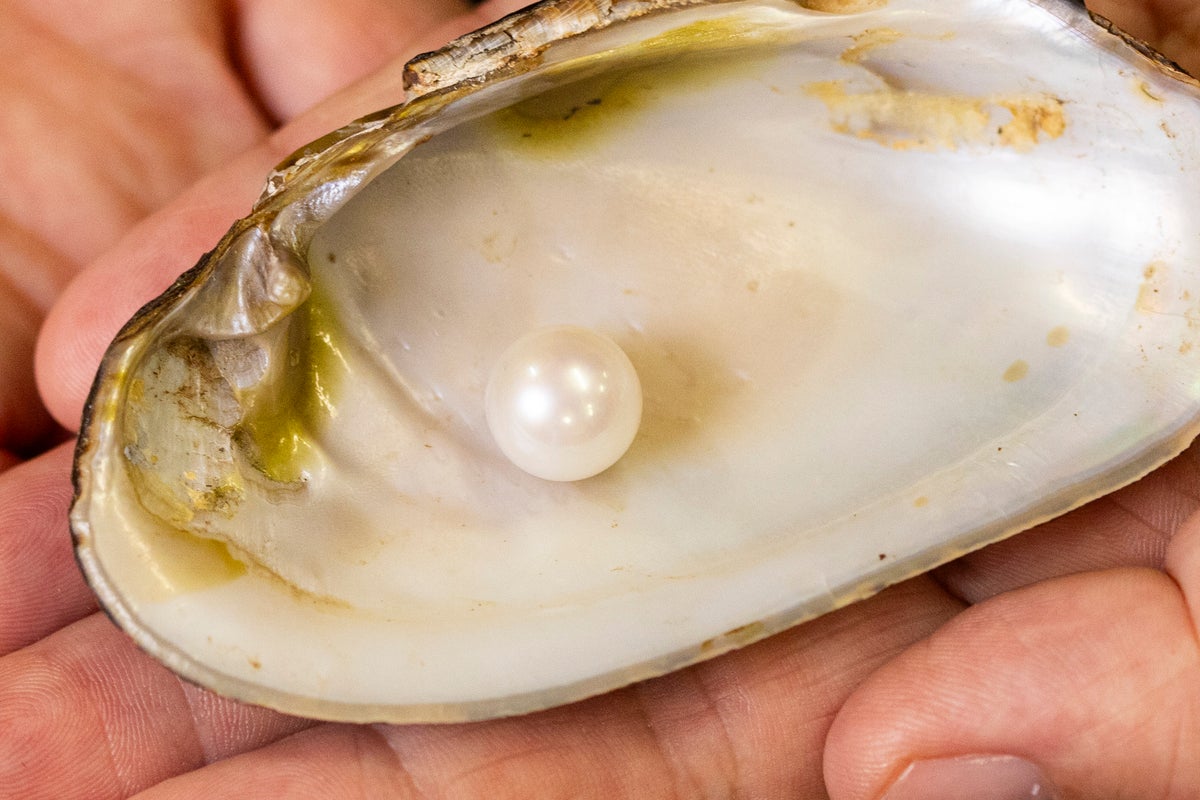
A remarkable freshwater pearl, the largest discovered in Scotland for over 400 years, is now on display at the National Museum of Scotland (NMS).
Named the Abernethy Pearl after its finder, William Abernethy, it was unearthed from a mussel near the River Tay in 1967.
This perfectly round specimen, measuring 11mm in diameter and weighing 43.6 grains, is the biggest Scottish find since the 1621 Kellie Pearl, which is believed to be part of the Scottish crown jewels.
Rachel Walcott, principal curator of earth systems at NMS, described the Abernethy Pearl as a "rare and unusual specimen".
Its estimated 80-year growth period to full size would be "not possible today", she said.
“It’s a thing of beauty, but it also highlights the impact of the biodiversity crisis.
“Pearl fishing was once a very important export industry but the populations of mussels in Scotland have been decimated.
“We simply wouldn’t have 80 years of undisturbed water in Scotland today for a pearl of this size to be created. It’s one of a kind.”

The Abernethy Pearl was donated to the nation by retired Edinburgh jeweller and NMS volunteer Alistir Wood Tait, who spent his 40-year career working with Scottish gems and river pearls.
He bought it at auction in 2024 for just under £94,000, with a view to donating it to the national collection.
Ms Walcott said the Abernethy Pearl is notable not only for its size but also its beauty.
“It’s actually perfectly formed, whereas often river pearls are what they call baroque, a bit wobbly, and they can often be brownish or striped,” she said.
“So to get something that big and something that beautiful pinky-white colour, certainly in freshwater pearls in the northern hemisphere, is very, very special.”
Scottish freshwater pearls have long been a “precious resource”. One of Julius Caesar’s biographers claimed he invaded the British Isles because of the pearls that could be found there.
Pearls are created when an irritant, such as a parasite or a grain of sand, gets inside a mussel or oyster.
Thin layers of aragonite, a form of the mineral calcium carbonate, and an organic substance called conchiolin, are built up around the irritant, which eventually creates the pearl.
Scotland is home to about 50 per cent of the world’s freshwater pearl mussels but its populations have been devastated in recent years by water pollution, habitat-damage and overfishing.
The mussels also depend on salmon during the early part of their lifecycle, so falling numbers of salmon in Scotland’s rivers are also putting the population under strain.
The invertebrate is now one of the UK’s most threatened species.
Ms Walcott said that between 1970 and 1998, when a ban on all pearl fishing in Scotland came into force, pearl mussels were becoming extinct at a rate of “two rivers or tributaries a year”.
“I sort of think of them as canaries of our rivers,” she said.
“These mussels are an indication of the huge threats coming from all sides at them, not to mention overfishing by humans.”
The Abernethy Pearl goes on display in the Restless Earth gallery at the NMS on Thursday.







